Across Niger, scattered through the towns and the empty plains are old mosques, ruined forts, rock carvings, and forgotten settlements, each with a story. These are the real monuments in Niger which tell us about trade routes that crossed the Sahara, about local rulers and empires, about faith and everyday life. Some were built centuries ago, still standing and still in use. Others are crumbling, left behind by people whose names we no longer know. You will find something quiet, raw, and real, places that hold the shape of history in their walls, their stones, and the spaces they’ve claimed for hundreds of years.
10 Best Monuments In Niger To Explore
From remote desert ruins to royal palaces still in use, these are the most powerful and enduring monuments in Niger, each with a story carved deep into the land.
1. Grand Mosque Of Agadez
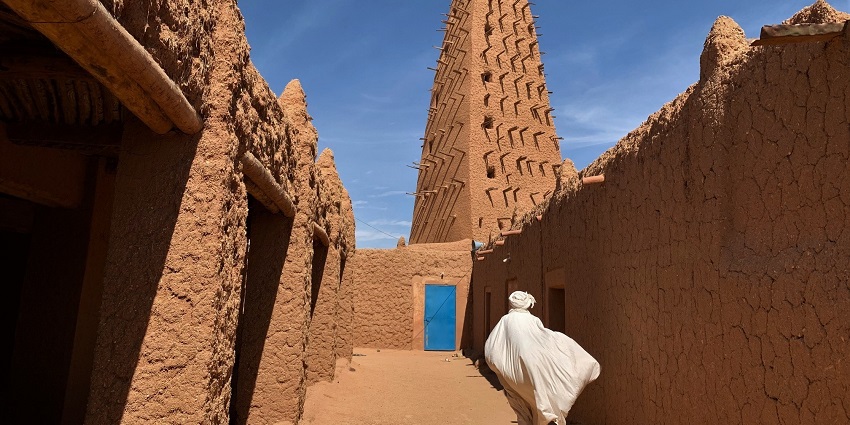
Photo: USAFRICOM / Wikimedia Commons
In the heart of Agadez stands a mosque built in 1515, still used and respected by the community today. Its tall, tapering minaret, which rises to 27 metres, is the tallest mudbrick structure in Niger and serves as a symbol of the city. The mosque was constructed during a time when Agadez thrived as a major stop on the trans-Saharan trade route. Its walls were shaped from local clay and held together using palm wood, a method suited to the dry climate. Wooden beams stick out along the sides, used to climb up when repairs are needed. Though the structure has been maintained over the centuries, its design has remained true to its origins. Daily prayers continue here, and the mosque is still at the centre of religious life.
Location: Agadez, central Niger
Best Time To Visit: November to February
2. Sultan’s Palace Of Agadez
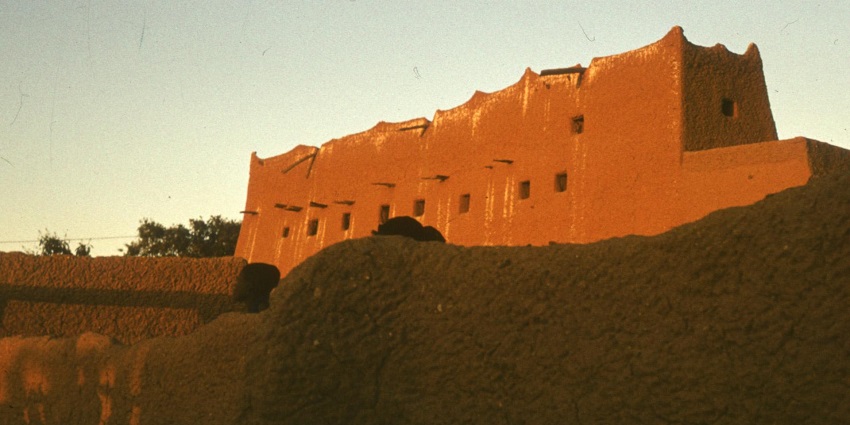
Photo: BursztaBot / Wikimedia Commons
Tucked inside the old lanes of Agadez is the residence of the Sultan of Aïr, a title that dates back over 500 years. The palace was built in the 1400s, during a time when Tuareg leaders were in control of trade and governance across this part of the Sahara. It’s made from hand-shaped clay bricks, with wide inner courtyards and thick walls that keep the desert heat at bay. You’ll find no flashy entrance, just a plain façade that hides a space still active in local life. With a guide, visitors are sometimes allowed to enter and see the rooms where traditional meetings are held. Inside, the decor reflects Tuareg heritage of leather mats, carved wooden objects, and woven fabrics passed down through generations.
Location: Agadez Old City
Timings: 9 AM to 5 PM
Best Time To Visit: November to February
3. Sultan’s Palace Of Zinder
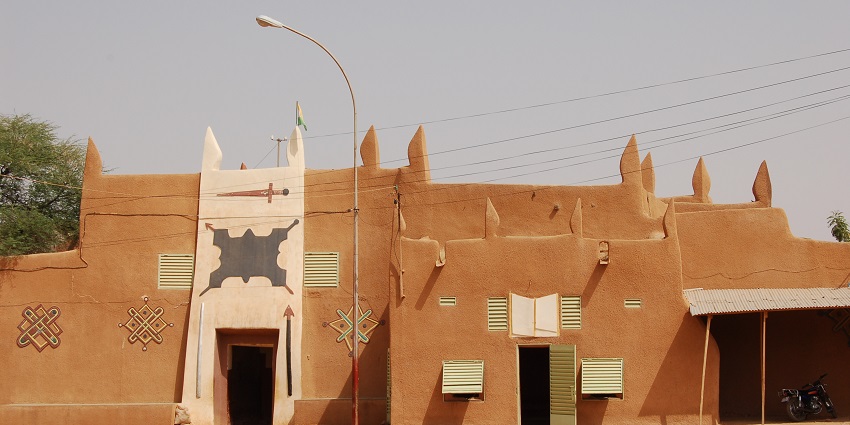
Photo: Roland / Wikimedia Commons
Built in the 19th century, the Sultan’s Palace served as the seat of the Sultan of Damagaram, who once ruled over a large part of the region. This palace is a classic example of Hausa design, with its thick earth walls, wooden doors, and wide inner courtyards. During colonial times, Zinder briefly became the capital of Niger, and this palace was at the centre of political life. Though the sultan no longer holds power, the building is still used for cultural gatherings and public audiences. Some rooms are open to visitors, especially with a local guide. Inside, there are displays of royal items like drums, furniture, and robes used by earlier rulers. While the rest of the city has grown, the palace area feels almost unchanged, offering a quiet space where stories from generations ago still linger.
Location: Birni District, Zinder
Timings: 9 AM – 6 PM
Best Time To Visit: December to February
4. Palace Of The Zarmakoye Of Dosso
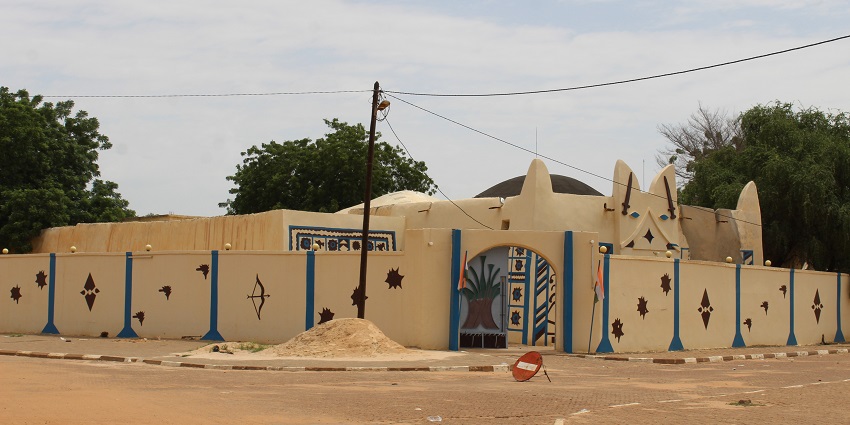
Photo: Ibrahimassoumane / Wikimedia Commons
In Dosso, there’s a modest palace that has served as the home of the Zarmakoye for generations. He is the traditional leader of the Zarma people, and his position still carries importance in local life. The building was put up in the late 1800s and continues to be used today, making it one of the few monuments in Niger that’s not just historical but active. It also holds political meaning; French officials once met with the Zarmakoye here during the colonial period. The walls of this palace are made using mud and straw, and the rooms are arranged around a central courtyard, typical of the local architectural style. You can visit parts of the palace with a local guide and see portraits, ceremonial robes, and traditional seats that have been passed down through the generations.
Location: Dosso, southwest Niger
Timings: 9 AM – 5 PM
Best Time To Visit: November to January
5. Niamey Grand Mosque
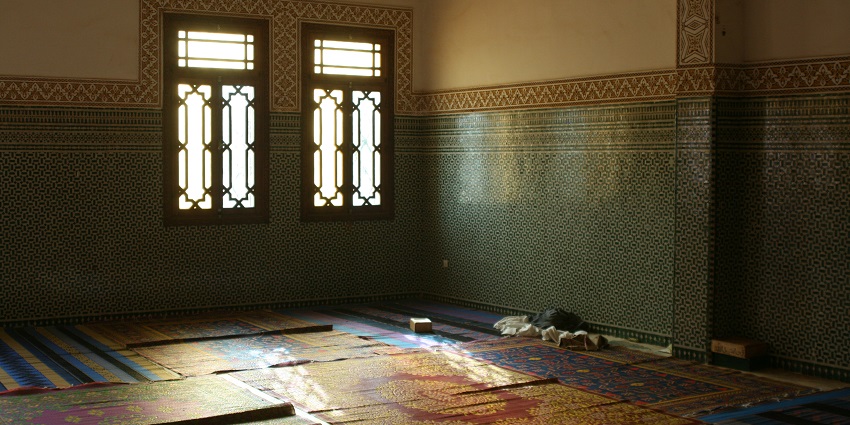
Photo: Dominik Schwarz / Wikimedia Commons
The Niamey Grand Mosque is one of the most visited monuments in Niger, standing tall with its golden dome and slender minaret. Built in the 1980s with support from Libya, it is the main mosque in the capital and serves as a religious centre for daily prayers, Friday sermons, and Islamic festivals. The design mixes local touches with modern materials, white stone, patterned tiles, and arched walkways, giving it a calm and open feel. The prayer hall is large and airy, able to hold several thousand worshippers at once. While the mosque is active, visitors are usually welcome during the day, outside of prayer hours. A local guide can help with entry and give context to what you see. Its location near the city centre and the Niger River makes it easy to find.
Location: Niamey city centre
Timings: 9 AM – 12 PM, 3 PM – 6 PM
Best Time To Visit: November to February
6. Great Mosque Of Zinder

Photo: Roland / Wikimedia Commons
In the centre of Zinder, this mosque stands as one of the few places where history and everyday life still meet. It was built during the time of the Damagaram rulers and has remained a place of prayer ever since. The walls are made of clay, packed by hand, with a flat roof and a square minaret that’s easy to spot from the nearby streets. It’s not a grand building, but it has been part of the city’s rhythm for generations. People gather here for Friday prayers, for holidays, and for daily worship. If you visit outside prayer times and speak with a local guide, there’s a good chance you’ll be allowed inside. The lanes around the mosque are narrow and lively, with houses and stalls made of the same earth.
Location: Birni District, Zinder
Timings: 9 AM – 12 PM, 3 PM – 6 PM
Best Time To Visit: December to February
7. Earthen Mosques Of The Tahoua Region
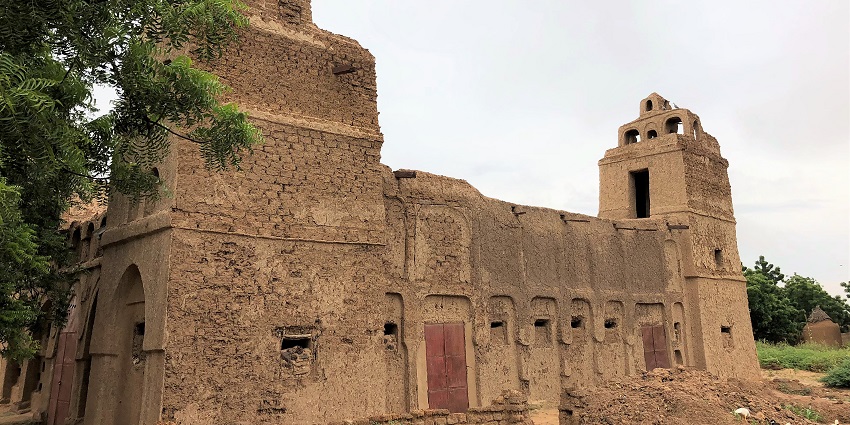
Photo: NigerTZai / Wikimedia Commons
In the rural parts of the Tahoua Region, you’ll find a number of simple but deeply meaningful monuments in Niger like the old earthen mosques built by hand using local clay. These mosques are not grand or famous outside the country, but for the communities that use them, they hold generations of faith and tradition. The structures follow the classic Sahelian style with flat roofs, pointed wooden beams jutting from the walls, and small openings that help cool the interior. Each village has its own, and the details can vary, like some mosques are wide with low ceilings, while others are tall and narrow. All of them were built by local builders without modern tools, using passed-down methods. Many are still in use today, serving as both places of worship and meeting points.
Location: Tahoua Region
Best Time To Visit: November to February
8. Plateau And Fortifications Of Djado
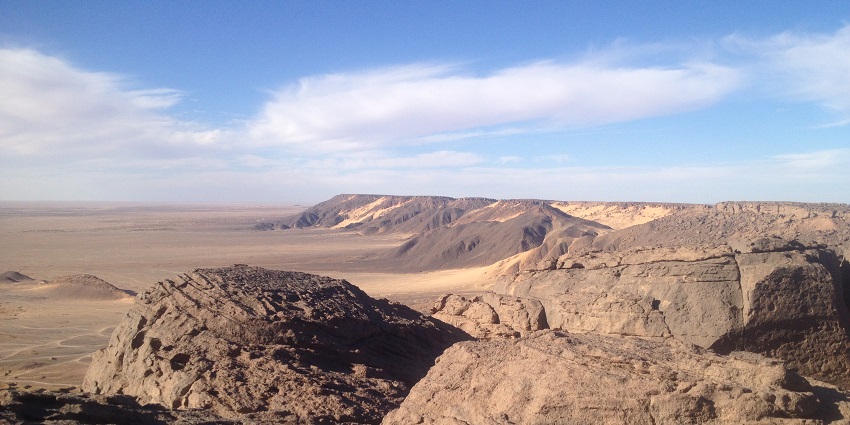
Photo: Maireymaradi / Wikimedia Commons
Far out in Niger’s northeast, in a stretch of desert few people ever reach, you’ll find the remains of Djado. It’s one of the loneliest monuments in Niger, set on a rocky rise near the borders of Libya and Chad. The old walls are made from salty clay that has held on through wind, sand, and time. Parts of the fort still stand, with towers, storage rooms, and roofless homes, but much has fallen. This was once a small fortified town, likely from around the 9th or 10th century, when caravans passed through with salt and goods. Some believe it was abandoned because water sources dried up or conflict made it unsafe. Reaching Djado means days of travel through the Sahara, but for those who do, the silence is unforgettable. There are no signs, no fences, just broken mud walls and open sky stretching in every direction.
Location: Djado Plateau, Kawar region, far northeast Niger
Best Time To Visit: November to January
9. Bura Archaeological Site
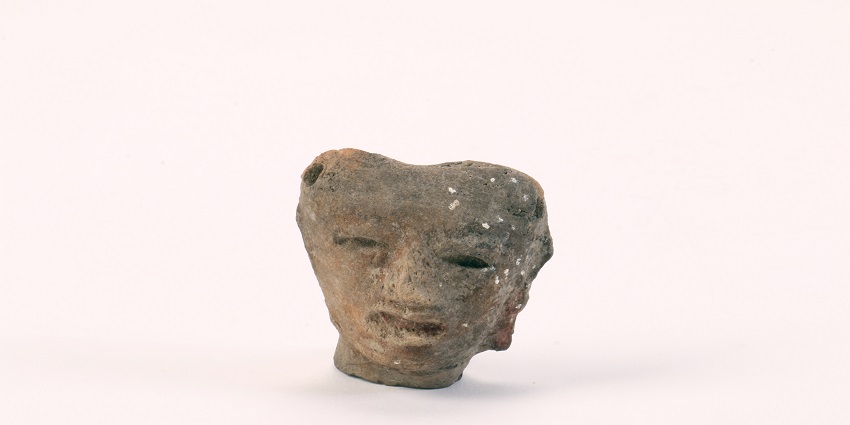
Photo: Fæ / Wikimedia Commons / Image For Representation Only
In the Tillabéri region of western Niger, near the town of Tera, lies one of the most fascinating ancient monuments in Niger. The Bura site came to attention in the 1980s when local excavations uncovered clay figures, pottery, and burial artefacts spread across open ground. These finds are believed to come from a civilisation that lived here from around the 3rd to the 13th century. The most striking pieces are the hollow clay heads, simple in form, with no clear facial features. Many were placed upright in burial areas spaced out across the land. Some areas also show signs of old settlements with clay walls and broken pots still visible today.
Location: Near Tera, Tillabéri Region
Timings: 9 AM – 4 PM
Best Time To Visit: December to February
10. Dabous Giraffe Rock Engravings
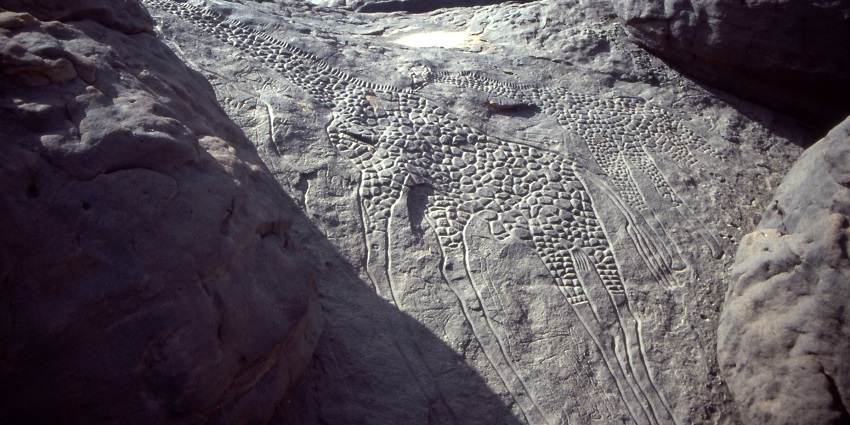
Photo: Albert Backer / Wikimedia Commons
In the Aïr Mountains, not far from Iferouane, two giraffes have been carved into the rock, tall, quiet figures that have stood for thousands of years. These are the Dabous giraffes, the largest animal engravings found anywhere in the world. Each one is over five metres tall. They weren’t made with machines or modern tools, just stone on stone, scratched out by hand. People carved them around 8,000 years ago, back when this part of Niger was green and full of wildlife. One of the giraffes has smaller human shapes nearby, possibly meant to show herders or hunters. These engravings are part of a wider group of rock art in the Aïr region, but none are as large or detailed as these. The site is remote, but local guides know the route.
Location: Dabous, near Iferouane, Aïr Mountains, northern Niger
Best Time To Visit: November to January
Most monuments in Niger are quiet places shaped by time, old clay walls, carved stones, and mosques that are still used every day. They were built by hand for faith, for protection, for daily life. Each one has something to say, even if it’s in silence. You don’t need a guidebook to understand their value. Just time and a bit of patience for stories carved into earth and held up by memory. Start your journey with TripXL and explore the places that still carry the voice of Niger’s past.
Cover Photo: SMMIMAGES / Wikimedia Commons


 WhatsApp
WhatsApp
 Twitter
Twitter









